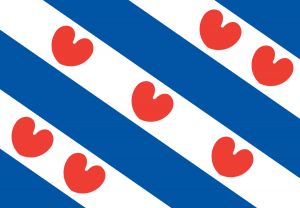Difference between revisions of "Language/Western-frisian/Grammar/How-to-Use-Have"
m (Quick edit) |
m (Quick edit) |
||
| Line 62: | Line 62: | ||
|description=In this lesson, we will learn how to use the verb "have" in Western Frisian. We will look at the different forms of the verb and how it is used in sentences. We will also look at some examples of how it is used in everyday conversations. | |description=In this lesson, we will learn how to use the verb "have" in Western Frisian. We will look at the different forms of the verb and how it is used in sentences. We will also look at some examples of how it is used in everyday conversations. | ||
}} | }} | ||
==Related Lessons== | |||
* [[Language/Western-frisian/Grammar/Conditional-Mood|Conditional Mood]] | |||
* [[Language/Western-frisian/Grammar/Pronouns|Pronouns]] | |||
* [[Language/Western-frisian/Grammar/Give-your-Opinion|Give your Opinion]] | |||
* [[Language/Western-frisian/Grammar/Negation|Negation]] | |||
* [[Language/Western-frisian/Grammar/Plurals|Plurals]] | |||
* [[Language/Western-frisian/Grammar/Gender|Gender]] | |||
* [[Language/Western-frisian/Grammar/Questions|Questions]] | |||
* [[Language/Western-frisian/Grammar/Adjectives|Adjectives]] | |||
* [[Language/Western-frisian/Grammar/How-to-Use-Be|How to Use Be]] | |||
{{Western-frisian-Page-Bottom}} | {{Western-frisian-Page-Bottom}} | ||
Revision as of 00:32, 2 March 2023
Hi Western Frisian learners! 😊
In this lesson, we will learn how to use the verb "have" in Western Frisian. We will look at the different forms of the verb and how it is used in sentences. We will also look at some examples of how it is used in everyday conversations.
Introduction
The verb "have" is an important verb in Western Frisian. It is used to express possession, ownership, or responsibility. It can also be used to express a state of being or an action that has been completed. In this lesson, we will look at the different forms of the verb and how it is used in sentences.
Conjugation
The verb "have" is conjugated differently depending on the subject of the sentence. Here are the conjugations for the verb "have":
| Subject | Present Tense | Past Tense |
|---|---|---|
| Ik (I) | Hawwe (Have) | Hie (Had) |
| Jo (You) | Hawwe (Have) | Hieste (Had) |
| Hy (He) | Hat (Has) | Hie (Had) |
| Sy (She) | Hat (Has) | Hie (Had) |
| It (It) | Hat (Has) | Hie (Had) |
| Wy (We) | Hawwe (Have) | Hiene (Had) |
| Jou (You) | Hawwe (Have) | Hiene (Had) |
| Sy (They) | Hawwe (Have) | Hiene (Had) |
Examples
Here are some examples of how the verb "have" is used in sentences:
- Ik hawwe in hûs (I have a house)
- Jo hawwe in auto (You have a car)
- Hy hat in baan (He has a job)
- Sy hat in hûn (She has a dog)
- It hat in probleem (It has a problem)
- Wy hawwe in hûs (We have a house)
- Jou hawwe in auto (You have a car)
- Sy hawwe in hûn (They have a dog)
Dialogue
Here is a dialogue between two people using the verb "have":
- Person 1: Hawwe jo in hûs? (Do you have a house?)
- Person 2: Ja, ik hawwe in hûs. (Yes, I have a house.)
Conclusion
In this lesson, we have looked at how to use the verb "have" in Western Frisian. We have seen the different conjugations of the verb and some examples of how it is used in sentences. We have also seen a dialogue between two people using the verb.
To improve your Western Frisian Grammar, you can also use the Polyglot Club website. Find native speakers and ask them any questions!
➡ If you have any questions, please ask them in the comments section below.
➡ Feel free to edit this wiki page if you think it can be improved. 😎
